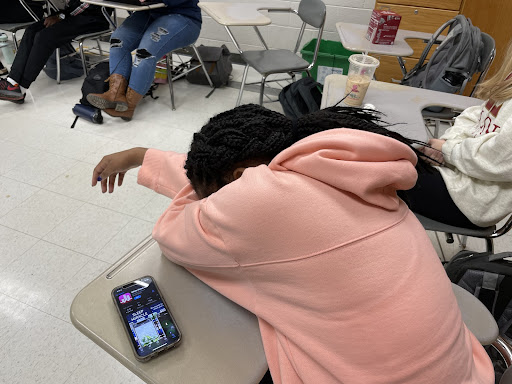When I began to ask around, people using white noise to fall asleep turned out to be more common than I initially thought. White noise is a common tool to aid someone in falling asleep if they cannot stand silence, and to drown out surrounding noise.
The Research
White noise is considered a combination of all frequencies the human ear can perceive played at the same amplitude, which is the strength of sound waves. This results in one invariant sound similar to tv static. Background noise or ambient sounds in urban areas are distracting and that’s why white noise is so appealing– it effectively drowns them out. And while it’s audible, it’s not too overpowering to avert attention away from sleeping.
White noise isn’t just used for falling asleep. In fact, due to its ability to diminish background noise, fire trucks, ambulances, and police cars imbue white noise in their sirens to help people locate the nearing vehicles.
One study even demonstrated white noise’s ability to help students with attention difficulties focus better while working. However, it decreased the productivity of students with an average attention span. Another study showed that white noise may help infants fall asleep quicker.
The sound of a fan or a thunderstorm is a popular noise choice for people when falling asleep. However, these noises aren’t considered white noise. Since these sounds aren’t consistent, they fall under the category of pink noise. Pink noise’s amplitude cuts in half when the frequency doubles, unlike white noise’s stagnant frequency and amplitude.
Argument for White Noise
Carter Cruikshank, a senior, has been using white noise (or rather pink noise) for the past five years to fall asleep. She listens to the sound of rain, wind, and thunderstorms, all while several fans are on in her room. Cruikshank uses the app Sleep Pillow to produce the pink noise and the app White Noise for white noise.
What’s interesting about Cruikshank’s usage of white noise is that she has an attention deficit disorder (ADD). As noted earlier, white noise can help students with attention disorders focus and stay on task. For Cruikshank, she said her app quiets her mind and “keeps [her] mind off things because there’s so much noise.”
Her case is unique in the reason she listens to it. Because of her ADD, Cruikshank’s usage of white noise might benefit her academically too.
Argument against White Noise
On the other hand, Chase Dutton, senior, despises the thought of white noise. He said, “Some people enjoy it because it’s calming and it’s just kind of like a sound to drown out other sounds. But for me, I’d rather have nothing playing in the background at all.”
Dutton said he prefers his room to be completely silent when falling asleep.
Instead of drowning out his thoughts, Dutton said white noise only keeps him awake and “ramps up any other noise around [him].” Whether it’s white noise or pink noise, all of it frustrates Dutton.
Conclusion
White and pink noise proves to be beneficial for people with ADHD and ADD while having the opposite effect on people with average attention spans. Each person has their preference of methods for falling asleep and by trying new things, one can discover something that can improve their sleep quality.

Hi! My name is Emma and I am a staff writer for The Mycenaean. I am part of the LRHS Chamber Orchestra and I am also scuba certified!

Leave a Reply